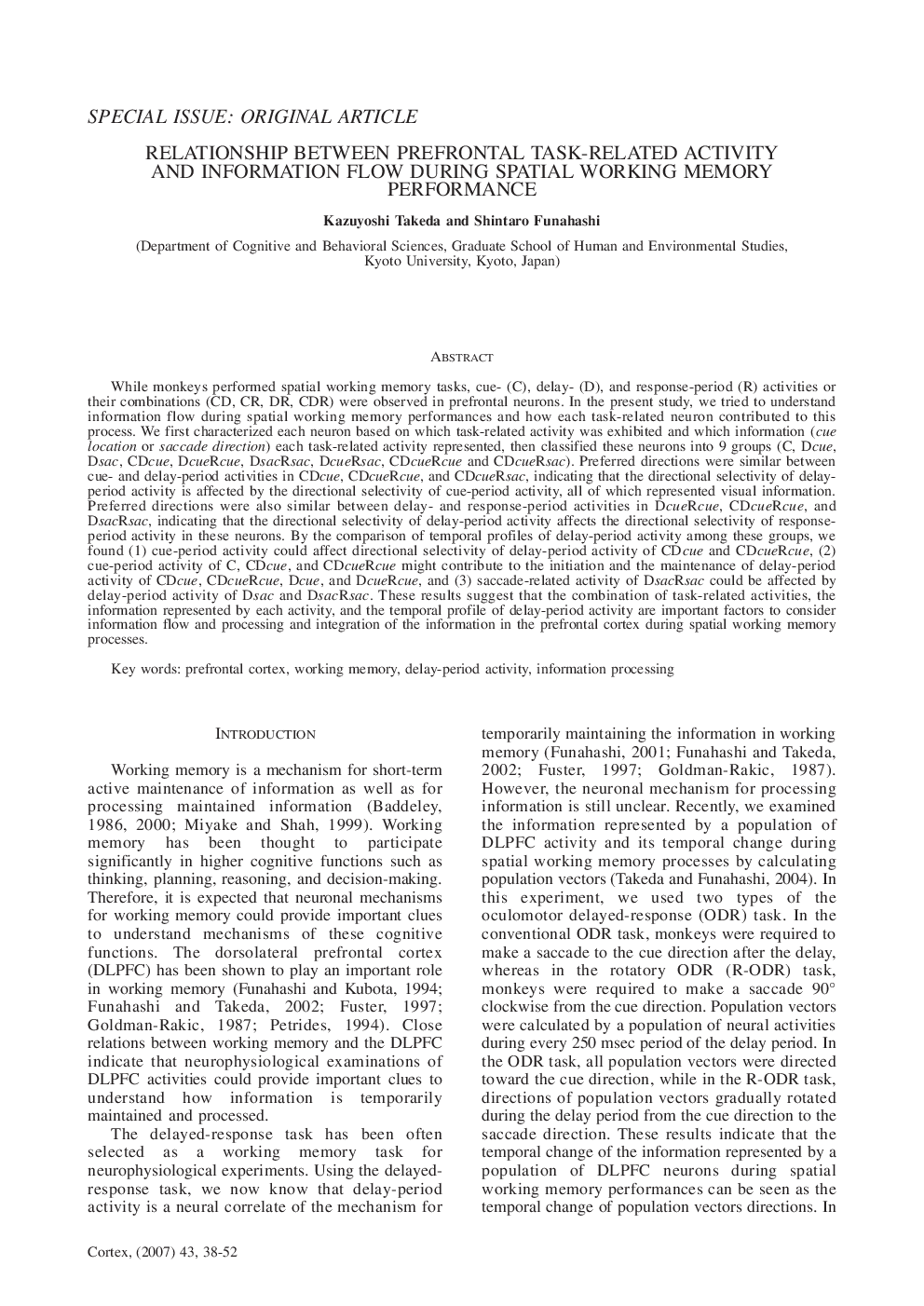| Article ID | Journal | Published Year | Pages | File Type |
|---|---|---|---|---|
| 943046 | Cortex | 2007 | 15 Pages |
Abstract
While monkeys performed spatial working memory tasks, cue- (C), delay- (D), and response-period (R) activities or their combinations (CD, CR, DR, CDR) were observed in prefrontal neurons. In the present study, we tried to understand information flow during spatial working memory performances and how each task-related neuron contributed to this process. We first characterized each neuron based on which task-related activity was exhibited and which information (cue location or saccade direction) each task-related activity represented, then classified these neurons into 9 groups (C, Dcue, Dsac, CDcue, Dcue Rcue, Dsac Rsac, Dcue Rsac, CDcue Rcue and CDcue Rsac). Preferred directions were similar between cue- and delay-period activities in CDcue, CDcue Rcue, and CDcue Rsac, indicating that the directional selectivity of delay- period activity is affected by the directional selectivity of cue-period activity, all of which represented visual information. Preferred directions were also similar between delay- and response-period activities in Dcue Rcue, CDcue Rcue, and Dsac Rsac, indicating that the directional selectivity of delay-period activity affects the directional selectivity of response- period activity in these neurons. By the comparison of temporal profiles of delay-period activity among these groups, we found (1) cue-period activity could affect directional selectivity of delay-period activity of CDcue and CDcue Rcue, (2) cue-period activity of C, CDcue, and CDcue Rcue might contribute to the initiation and the maintenance of delay-period activity of CDcue, CDcue Rcue, Dcue, and Dcue Rcue, and (3) saccade-related activity of Dsac Rsac could be affected by delay-period activity of Dsac and Dsac Rsac. These results suggest that the combination of task-related activities, the information represented by each activity, and the temporal profile of delay-period activity are important factors to consider information flow and processing and integration of the information in the prefrontal cortex during spatial working memory processes.
Related Topics
Life Sciences
Neuroscience
Behavioral Neuroscience
Authors
Kazuyoshi Takeda, Shintaro Funahashi,
